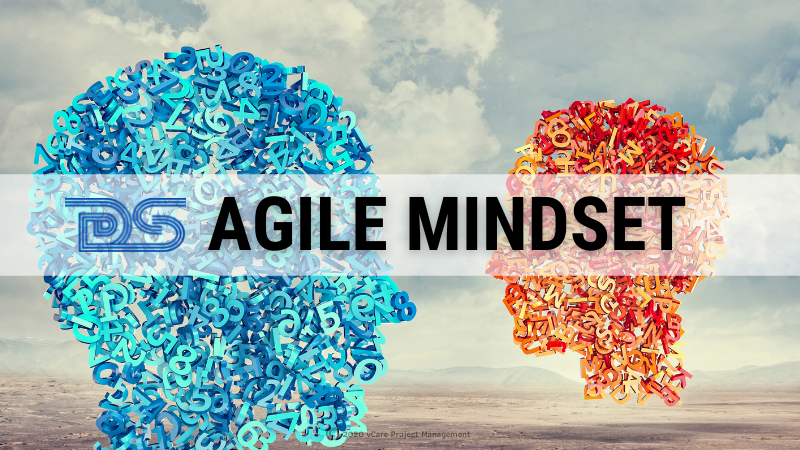
The Agile Mindset
Agile (.adj) means “to move quickly and easily”. It is a mindset of being more responsive. Humans are born agile. Off late, agile has been highly adopted by the software industry, but, in reality, it has been adopted by organizations of different domains to bring on success.
Agile Manifesto, created by seventeen software developers in 2001, embraces four core values: individual interactions over process and tools; working software rather than through documentation; collaboration with customers; and responding to change rather than following a plan.
Agile mindset is not only about that, but it would have those four principles as a foundation for a successful agile transformation bringing on agility in the organization. This transformation would certainly change the way organizations handle their portfolio, programs and projects. Steve Denning, an authority on Agile management, argues that hardware developers need to embrace Agile principles to keep up with the pace of innovation.

Agile Transformation
Tesla creates a lot of 3D Models and continuously iterates them to create many models to test them in different ways rapidly. 3D Printing techniques have empowered Tesla to pursue this methodology.
With this capability, rapid changes in hardware component level are iterated until the best design is evolved. SpaceX also exhibits a similar continuous iteration. Continuously improving and managing to incorporate customer feedback is all about having an agile mindset. The agile mindset is more of the management and leadership problem, which needs a cultural shift of thinking in an agile way.

Problems for existing project managers
What are the problems for existing project managers for an agile mindset?
- Typically, project managers assume that Agile is another project management approach.
- Ability to unlearn and learn to avoid the lens of project management previously done.
- Lack of familiarity with Agile concepts (e.g., Self-Organizing Teams)
- Confusion between the agile principles and frameworks such as Scrum, XP, etc.,
- Undermining the benefits of agile and not having trust in those principles
Agile Mindset
When we talk about the agile mindset, I would like to share with you all the below Zen Ex Machina diagram from Ahmed Sidkey’s “Agile mindset” presentation done in Agile Alliance conference 2014. The agile mindset reflects upon the actions and behaviors, thereby creating an agile culture. These can be brought to action based on 4 Values, 12 Principles as outlined in the diagram here.
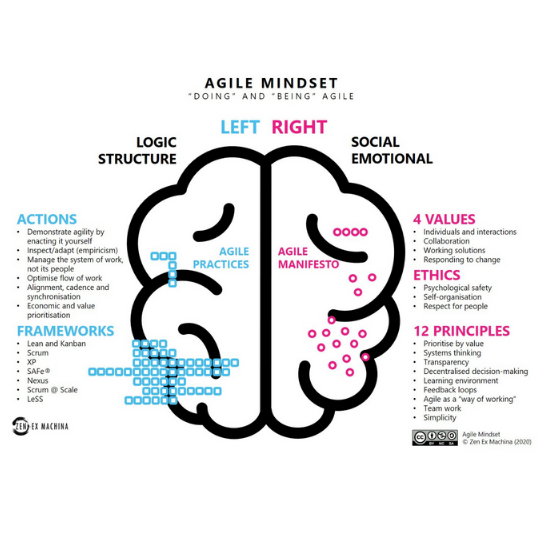
Agile Mindset
Agile mindset is all about exhibiting certain behaviors. In an organization, we need to respect the worth of every person. Always exhibit truthfulness in communication by being transparent on the data, actions and decisions made. Commit to the team and organization through the collaboration for the common goal, trusting that support will be available from each other.
The following table outlines the differences in terms of agile vs. fixed mindset.

Fixed Mindset vs. Agile Mindset
When you are working on portfolio/programs/projects, you don’t see all the necessary outcomes, but you keep evolving it. Typically, when we are talking about an agile mindset, it always keeps evolving. This evolution can be referred to IKIWISI – I know it when I see it. So, when you can show the progress, customers or stakeholders can relate it better and conceive better.
It’s important to have an agile mindset, to “be agile,” but you also need to have the requisite skills to “do agile” and the experience to do “enterprise agile.” Though we understand the benefits and tenets of the agile mindset, when it comes to implementation, there is a lack of guidance for the team on what to adopt and how to go about the same. Typically, when teams follow a prescriptive framework, things fall in line and provide better results. It provides a better improvement which is consistent over time. One such prescriptive framework for adopting agile practices is DAD (Disciplined Agile Delivery) framework.
How DAD (Disciplined Agile Delivery) can be leveraged for mindset?
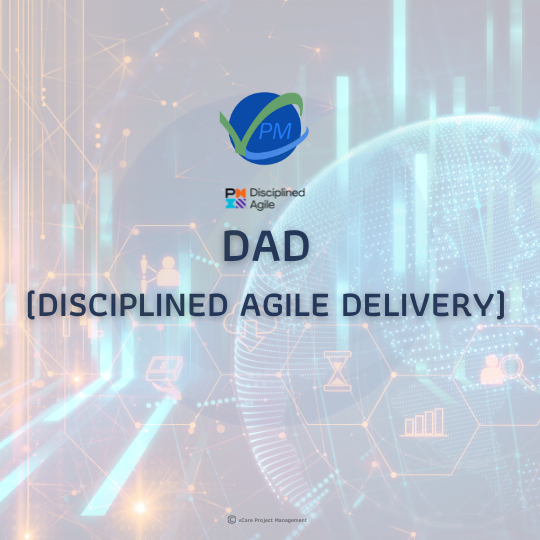
DAD
DAD approaches agile as a people-first, learning-oriented methodology for delivery. PMI DAD Toolkit is free for use. The focus of the toolkit is on the delivery, which is achieved by being hybrid which can take the best across multiple methodologies. The agile mindset can be accomplished by leveraging the Disciplined Agile mindset recommendation from PMI, which encompasses PPG (Principles, Promises and Guidance). DAD can help us transform ourselves into an agile mindset in practice. Easier said than done, but DAD could be the guiding light toward it.
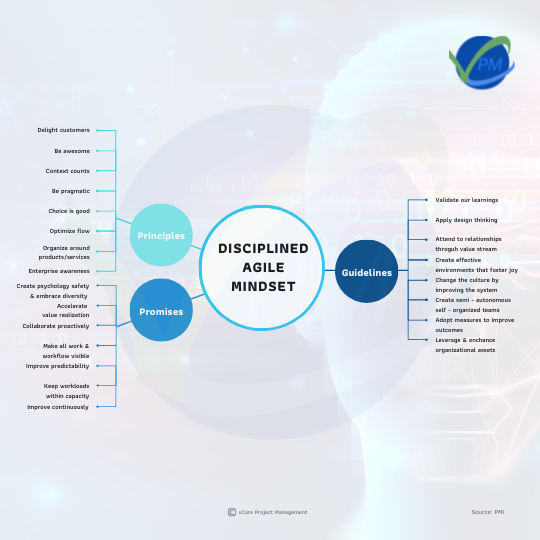
Disciplined Agile Mindset
For having and improving the agile mindset, the locus of control needs to be more internal. The focus on outcomes and giving the necessary empowerment to people makes a significant difference. It should be embracing rather than imposition to people or one’s self. Disciplined Agile provides guardrails, guidance and enterprise awareness so your life as PM would be easy to advocate and embrace. DAD’s toolkit helps an organization to adopt common vocabulary while adoption of agile becomes easier with principles such as Delighting the customers, Optimizing the flow, etc.,
The following are some of the philosophies which could help the portfolio to be managed better based on DAD’s toolkit:
The motivation of resources:
There could be projects wherein there is a need for reduction in resources, some places it might cause cost overrun. Have the portfolio resources spread across the projects and rotate them across projects based on interests. Having a stable team who have good knowledge and understanding of domain can be cross-trained easily as well. Enable the team by building a safe culture and environment, and by motivating them to excel.
Business Value:
In this pandemic time, the customer would also suffer. There is no other good time than now to support them. One of the key portfolio strategies would be to maximize the stakeholder value by minimizing the risk in building the whole thing. So, approach such as “Prove Architecture Early” by building architecture components earlier would help achieve balance in risk profile and provide better value. This move helps the team to arrive at consensus early and re-prioritize activities after discussing with the customer.
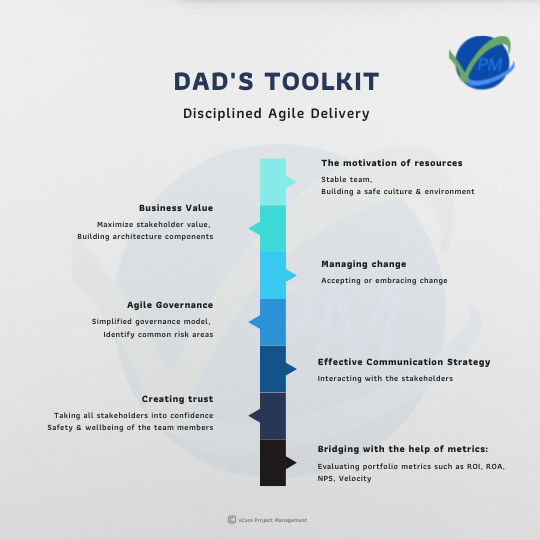
DAD’s Toolkit
Managing change:
With an agile mindset, fundamental thinking is accepting or embracing the fact that change is natural. A change could be influenced by a situation like a pandemic, technology changes, political factor, economic and legislative changes, and many more reasons. This change needs to be managed by Managing work items, prioritizing who has to work on it with details on How? and What?. Use of tools like Kanban boards can be very handy here.
Agile Governance:
- Incorporate simplified governance model across the portfolio and programs.
- Identify common risk areas and try to revisit the vision on what is to be accomplished.
- Relook strategies where the PMO efforts can be focused on creating business value for the stakeholders.
Alignment of the portfolio strategy with enterprise strategy would help to bring the stakeholders on the same page as well.
Effective Communication Strategy:
Interacting with the stakeholders is a very important component in seamless, agile implementation. The right choices of the communication channel based on the given context are very influential and can make a big difference.
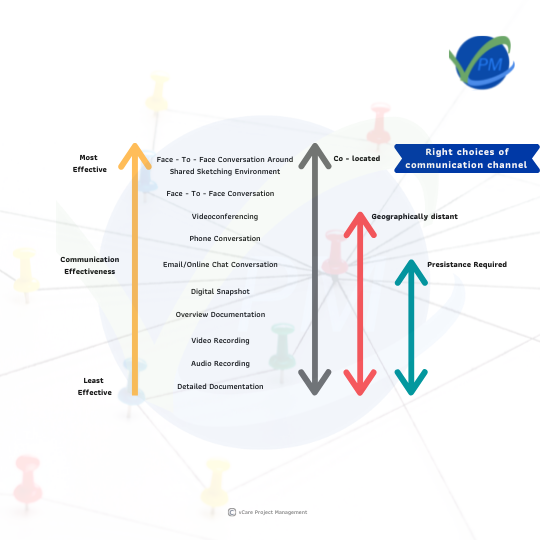
Right choices of the communication channel
Creating trust:
- Ensure the safety and well being of the team members.
- Take smaller initiatives which can lower the risk and enable frequent deliveries, thereby creating a trust of both the customer, teams and vendors.
- Act on action items after taking all stakeholders into confidence, which would create trust, resulting in a long-term relationship and also would enable us to maneuver key initiatives smoothly across the portfolio.
Bridging with the help of metrics:
Look at the gaps in the portfolio due to the current situation by evaluating portfolio metrics such as ROI, ROA, NPS, Velocity, etc., This would help on how to embrace the change and why that change is to be made. Manage the portfolio better by interacting with other teams based on the metrics.
Conclusion:
Overall this article aims to impart the essential aspects of the Agile Mindset. It highlights some key ingredients which can be applied during the current pandemic times to improve the situation better from Agile Context.

Recent Comments